Rare photos of North Korea from the early 20th century
Today North Korea is a mysterious country, closed to the entire world reserve of totalitarianism. Since the formation of the state in 1948, it plunged into diplomatic and economic isolation, driven by a policy of "independence" of Kim Il sung. Today pictures of everyday life in North Korea is rare that you meet with a genuine interest. But it was not always so. A short period at the beginning of the XX century, after the fall of the "Thermite Kingdom" in 1910, before the split of the Korean Peninsula in 1945, Pyongyang was open and fastest growing city. Let's look at the North Korean capital of those times, a time when Pyongyang was called Haze.
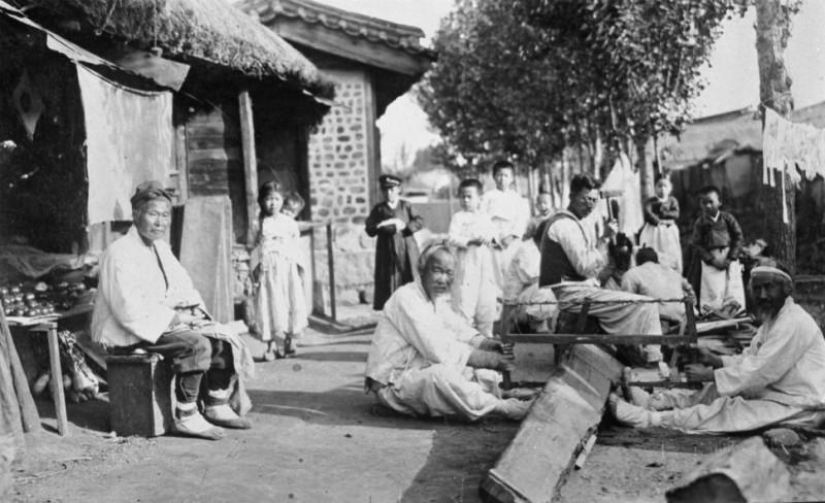
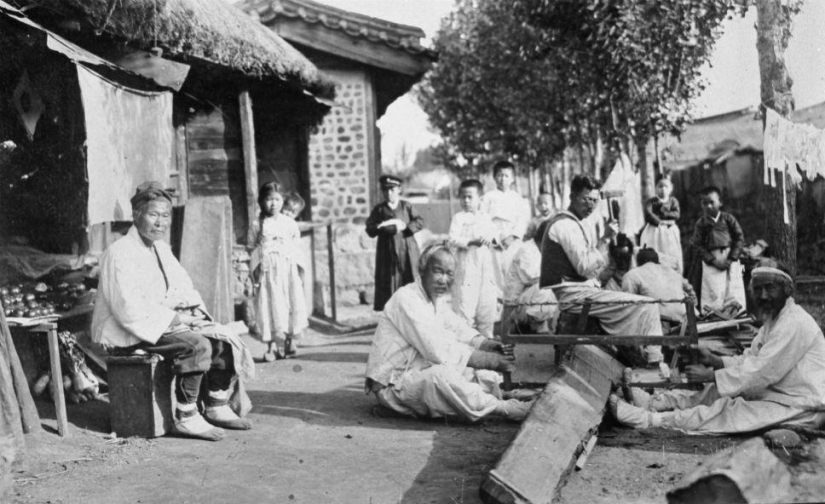
Two men sawed a log.
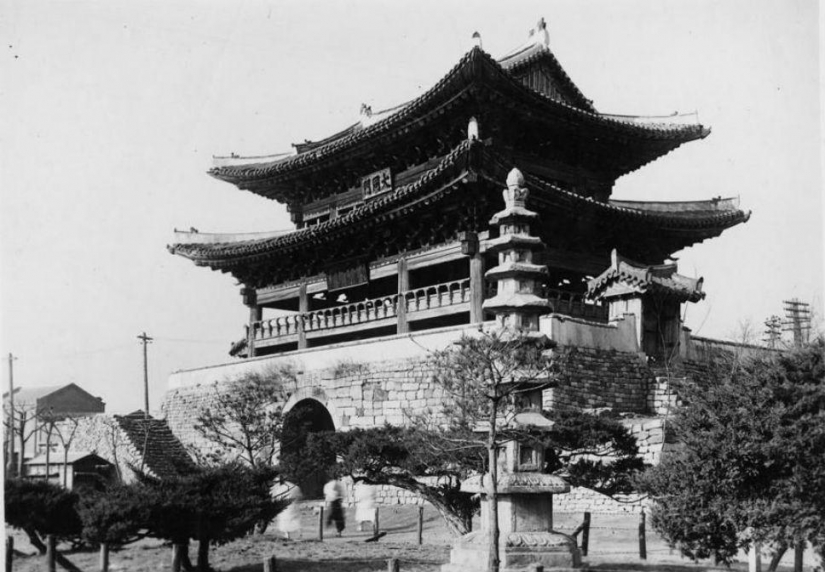
View of the East gate of the old city of Pyongyang. Today, few tourists visiting the city stop at the East gate, which are considered the property of the nation. They were first erected in the VI century. The current gate was built in 1635, after the XVI century during the Japanese invasion burnt their predecessors. This is one of the oldest buildings in North Korea's capital, which resemble that Pyongyang was a traditional Asian city rather than a reserve of totalitarianism.
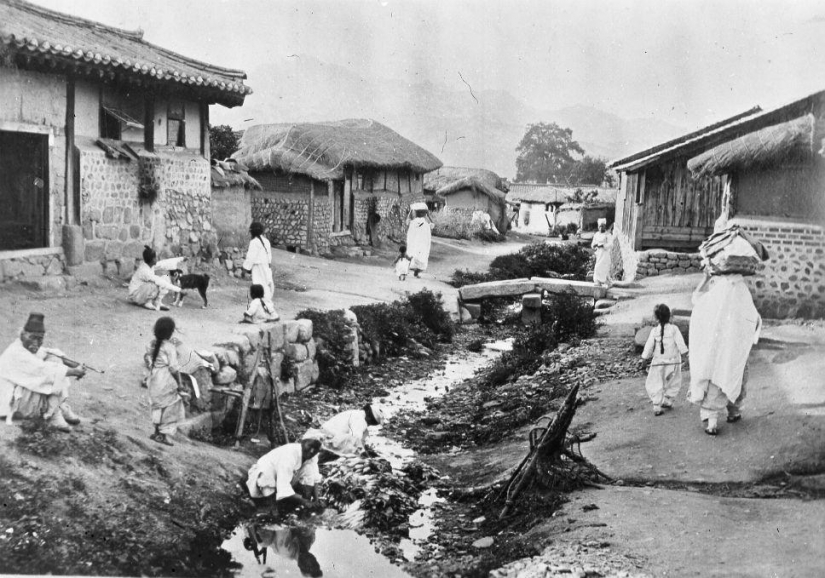
Street Of Pyongyang. Under Japanese colonial rule, the city's population exceeded 200,000. And only after the Korean war (1950-1953), Pyongyang became a city that we know today — with wide boulevards and impressive monuments.
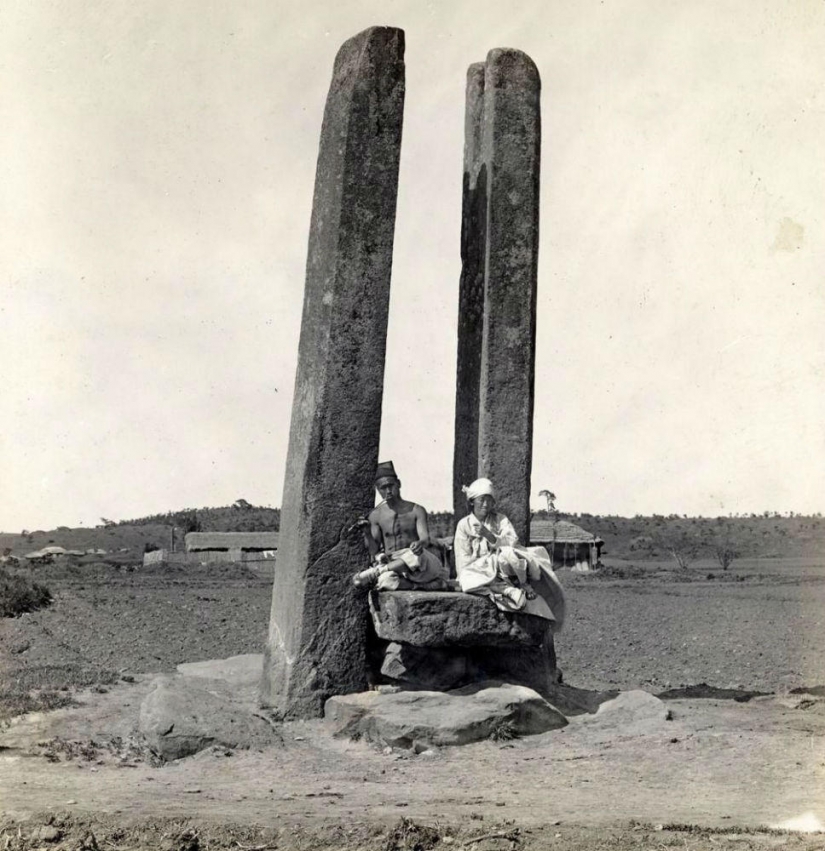
People sit at the "anchor stones" in the fields near Pyongyang. According to Korean folklore, Pyongyang is a boat floating in the waters of the rivers Taedong and Pothong. Some sources claim that the city rested on two large stones, so as not to float away, while others claim that the monoliths served as a mast "floating city-island".
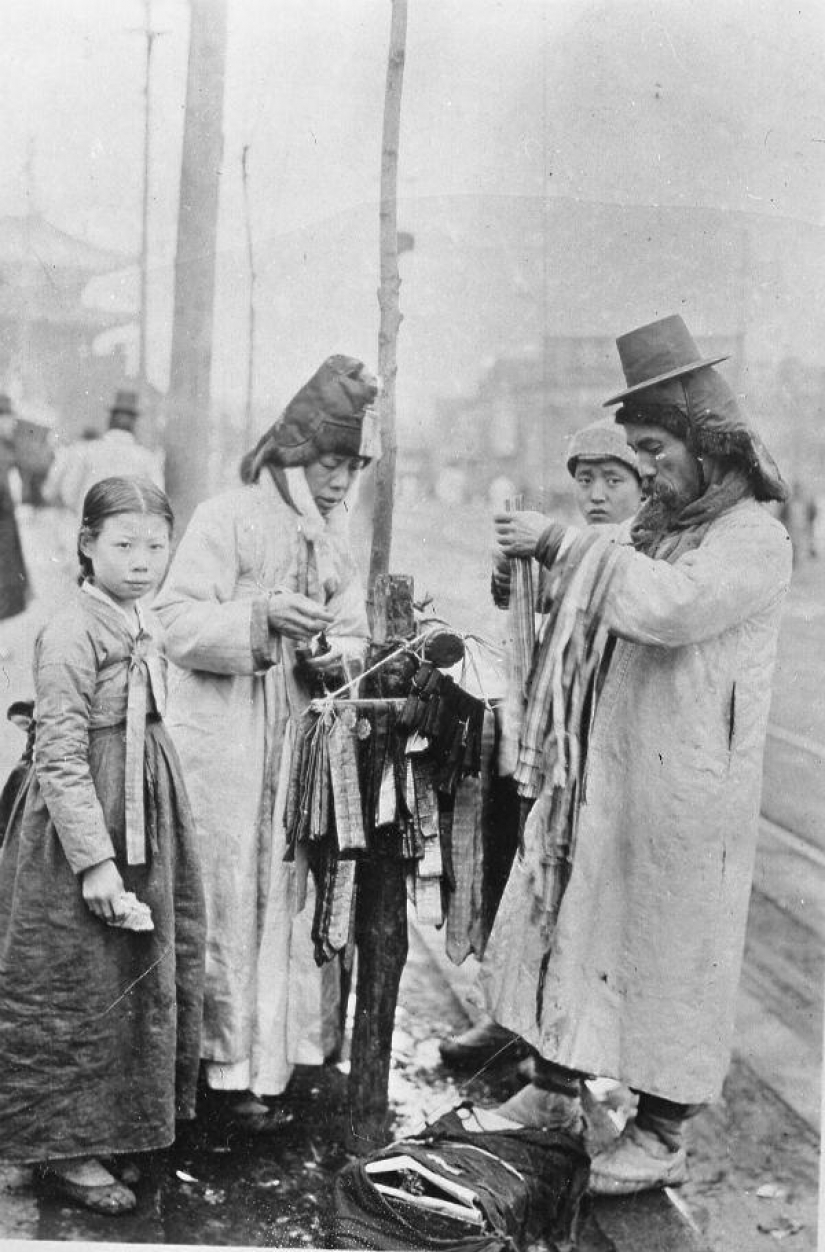
Trader on a busy street in Pyongyang.
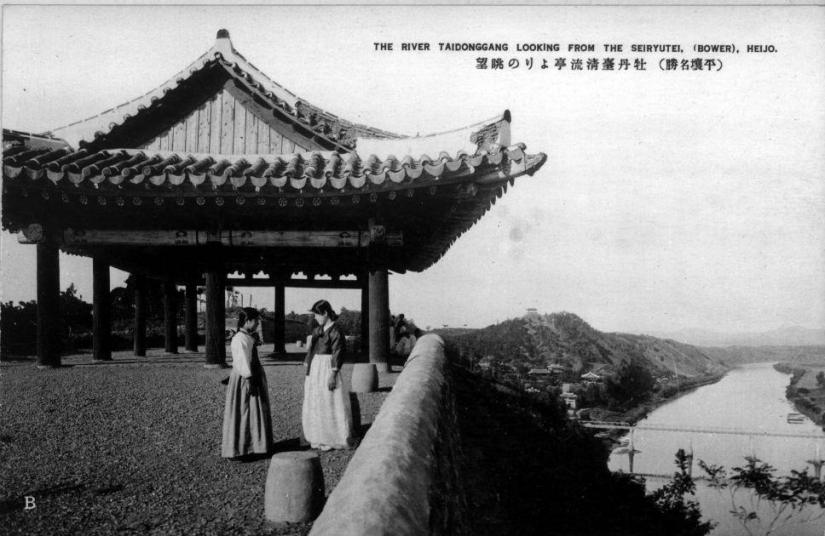
Postcard with Japanese hieroglyphs depicting two women at the pavilion on the banks of the Taedong river. On these cliffs they say that they "just made one swipe of a giant sword." The rocks occupy a special place in the capital's folklore. According to one legend, they came at the request of one young farmer: boy rescued carp, which encouraged him to fulfill his every desire, and the boy asked to change the course of the river Taedong, so she was no longer flooded farms of his native village.
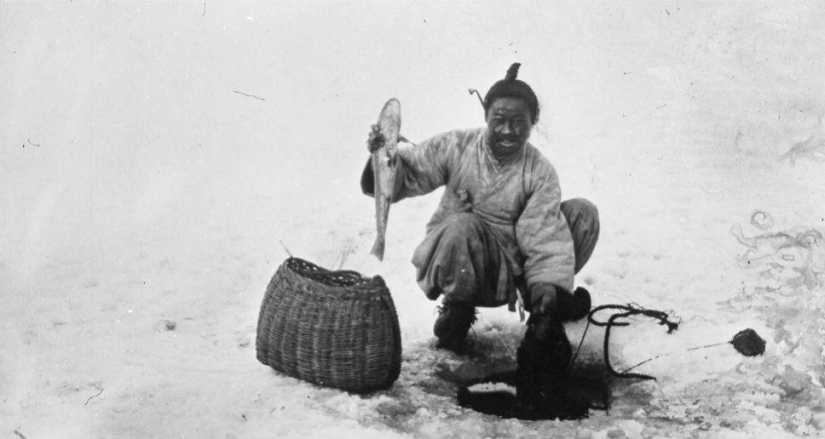
The man caught the fish on a frozen river. Rainbow trout soup from the Taedong river — Pyongyang typical dish, and ice fishing remains a popular Korean pastime even now. In South Korea even hosts the annual festival of winter fishing.
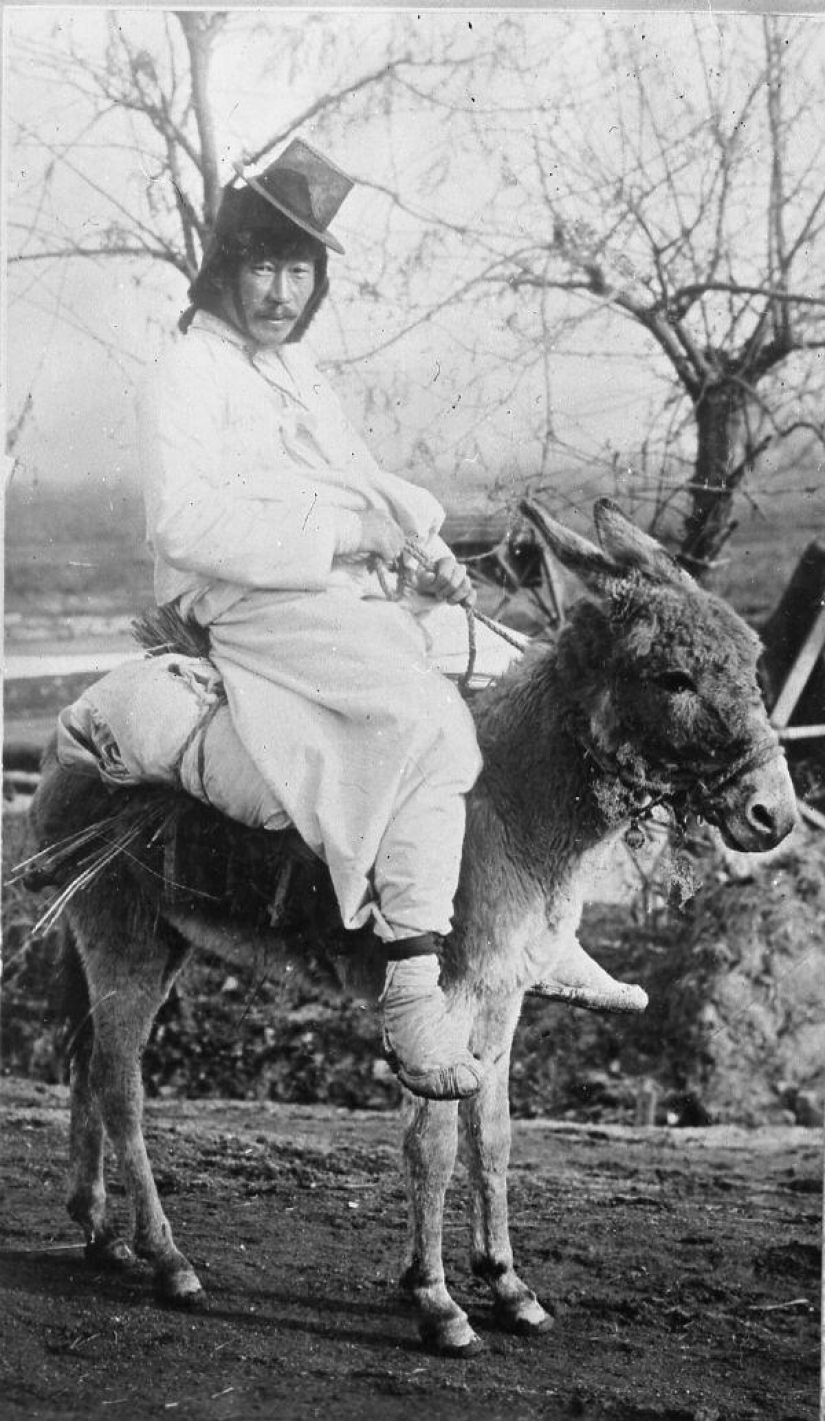
The man on a donkey amid the wasteland in a traditional Korean hat called a gat.
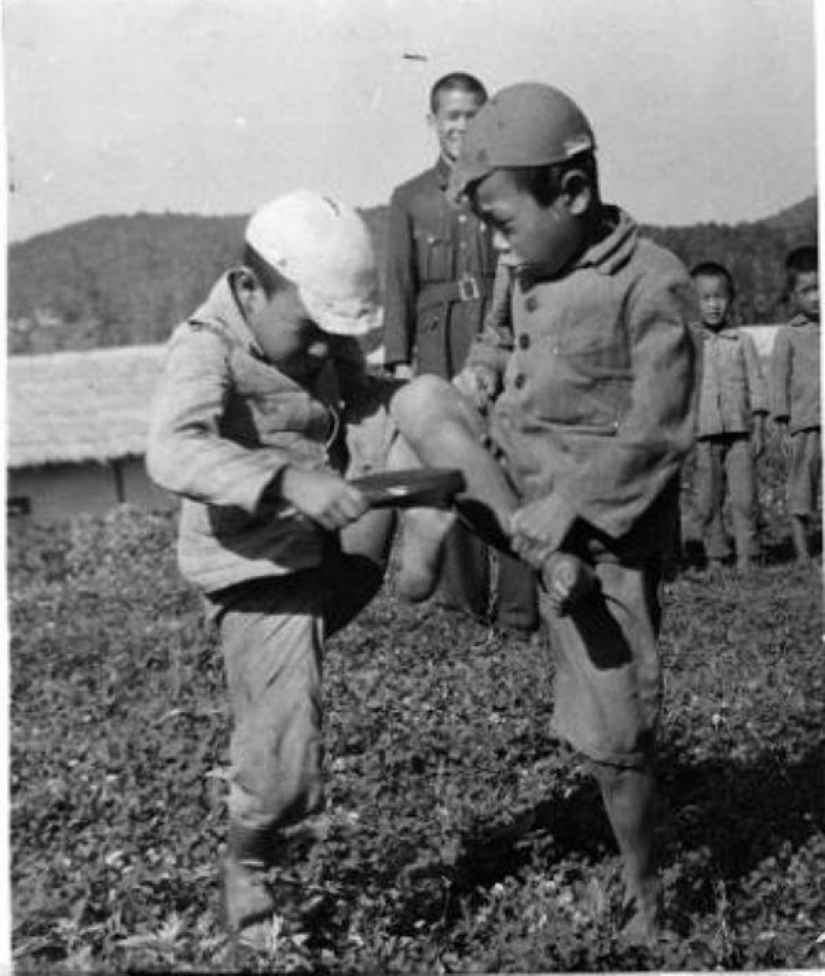
Two boys are playing before school.
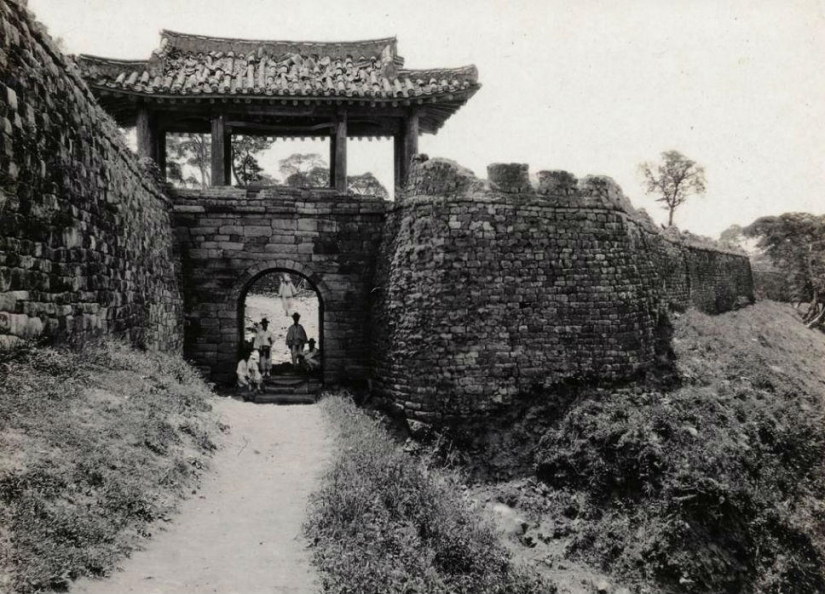
Men gathered at the Gate of the Seventh Star. This name refers to the constellation of the Big Dipper, which points to the North star, and the gate is situated at the North. In the early twentieth century some parts of the ancient city wiped off the face of the earth to make way for tram lines, but many of the gates were preserved as historical monuments. The gate of the Seventh the Stars still stand in the Park Moran in Pyongyang. The first shots that marked the start of land battles in the Russo-Japanese war, occurred from these gates.
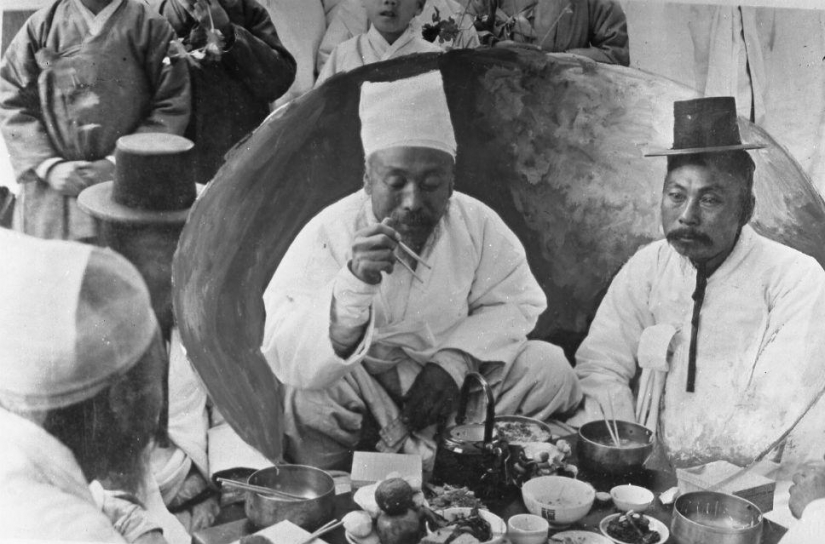
Man eats traditional Korean dish consisting of small portions of vegetables and rice. Before the Japanese occupation, the Peninsula was divided into administrative provinces, which preserved their differences in the national cuisine. Today the food in Pyongyang is from grain and meat — what you need to survive the harsh winter. Across the country there are grocery warehouses.
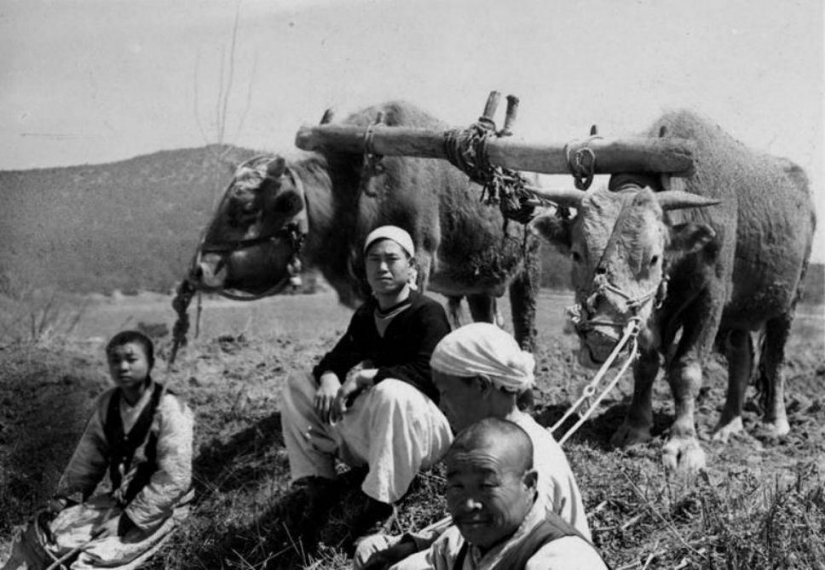
Farmers in field with their oxen. Under colonial rule, the agricultural sector of North Korea was aimed at maintaining food resources of Japan. Today a country in which less than 25% of arable land, also depends on agriculture. Soldiers even forced to work in the fields. In the words of one soldier: "North Korea can't grow crops and livestock without an army... Our main objective is the eradication of malnutrition".
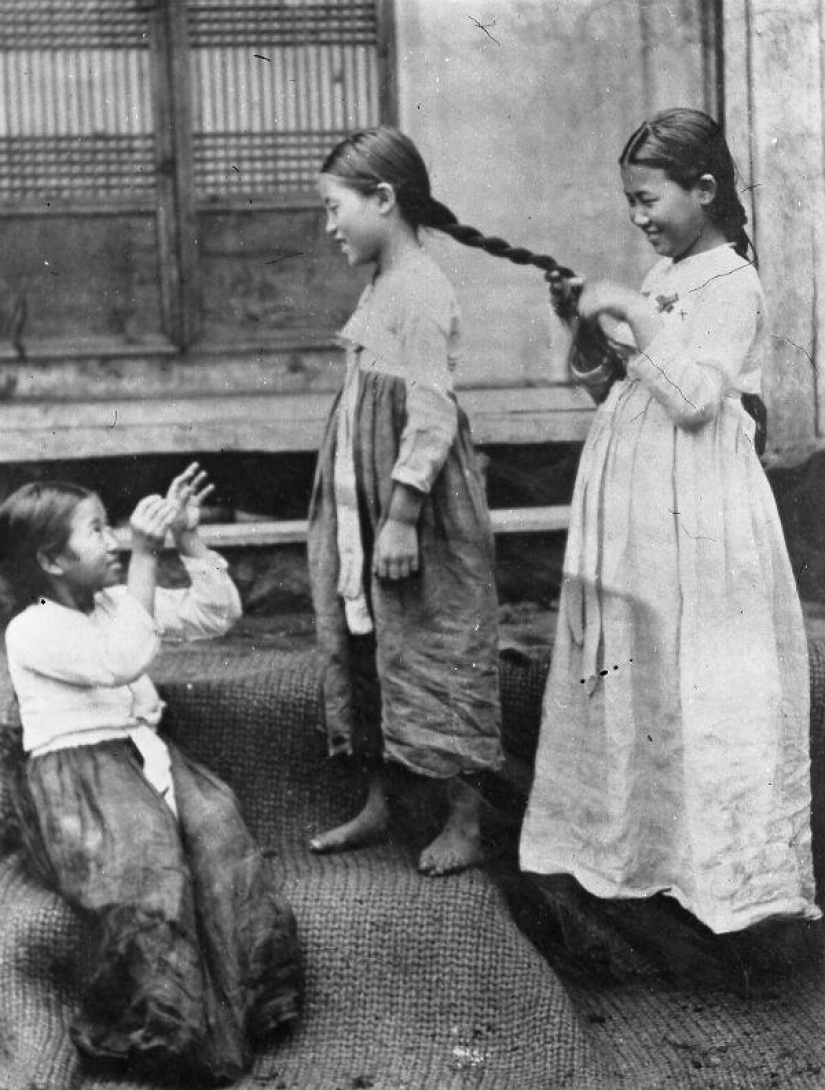
Three girls play on the sills of the building.
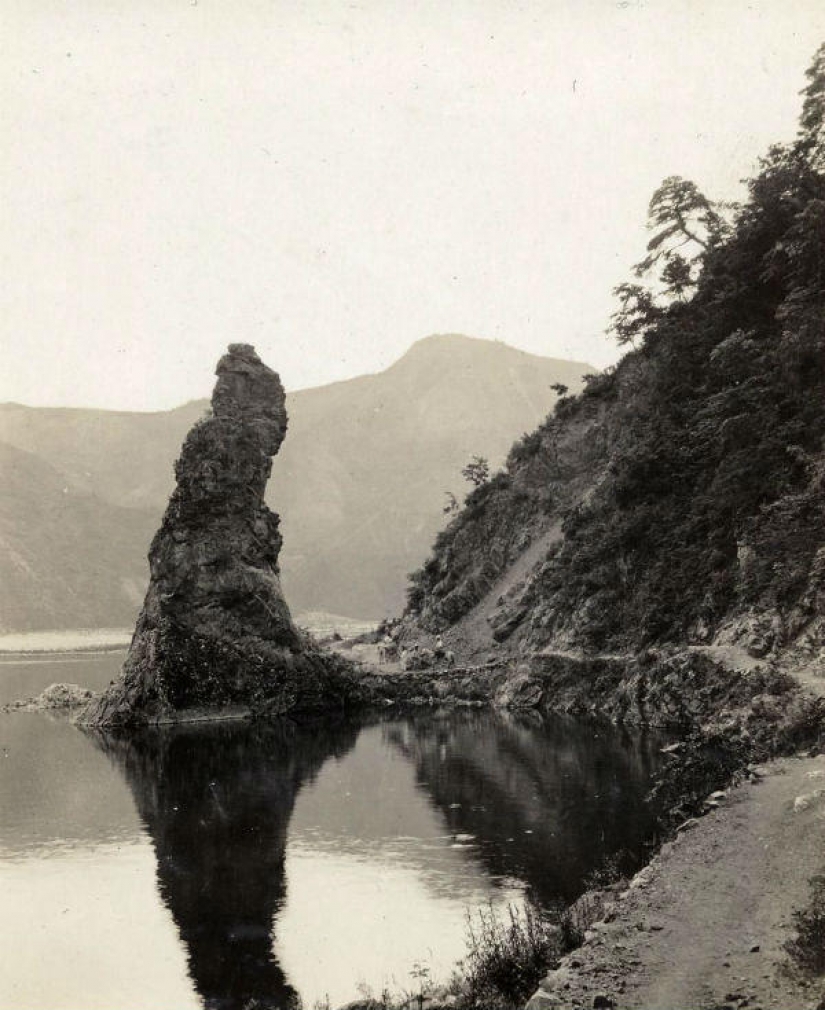
Beautiful scenery around Pyongyang.
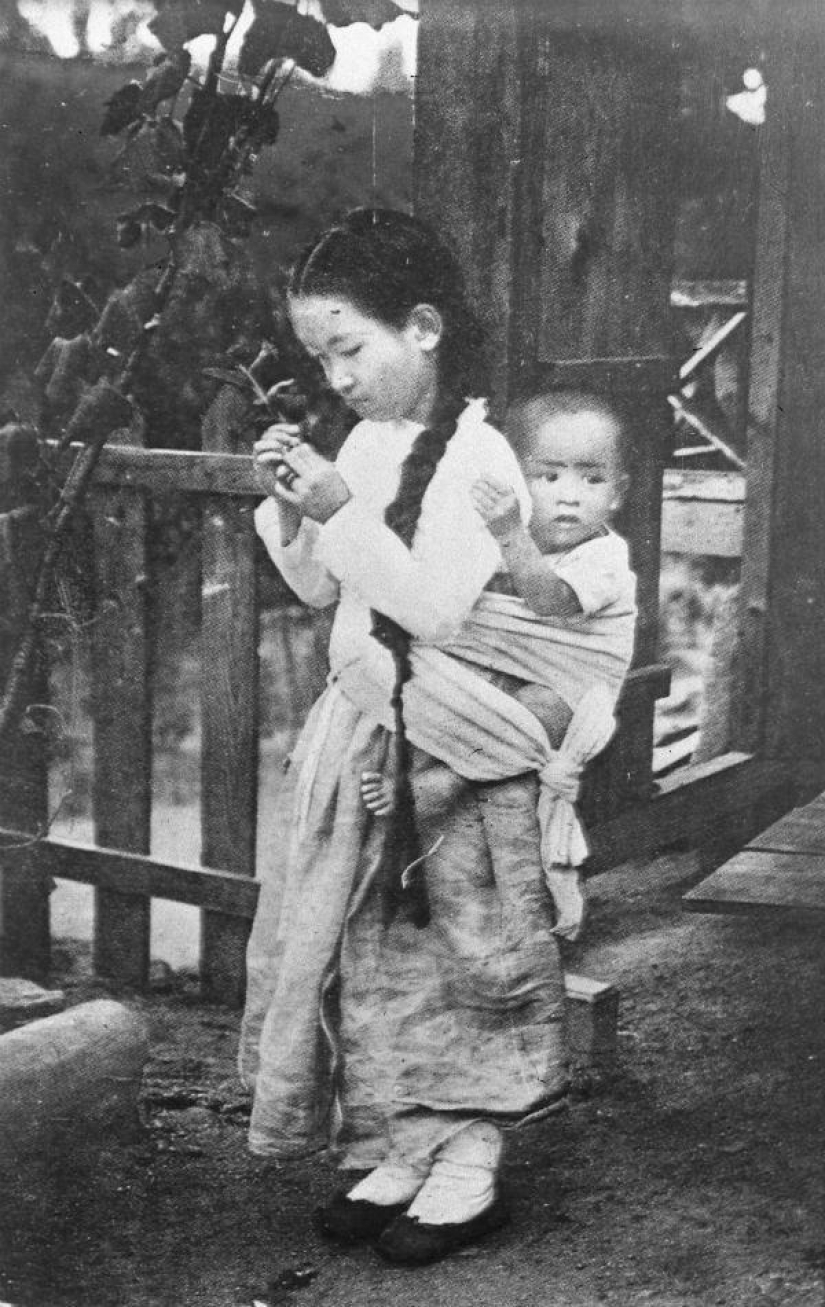
Girl with her brother on the back.
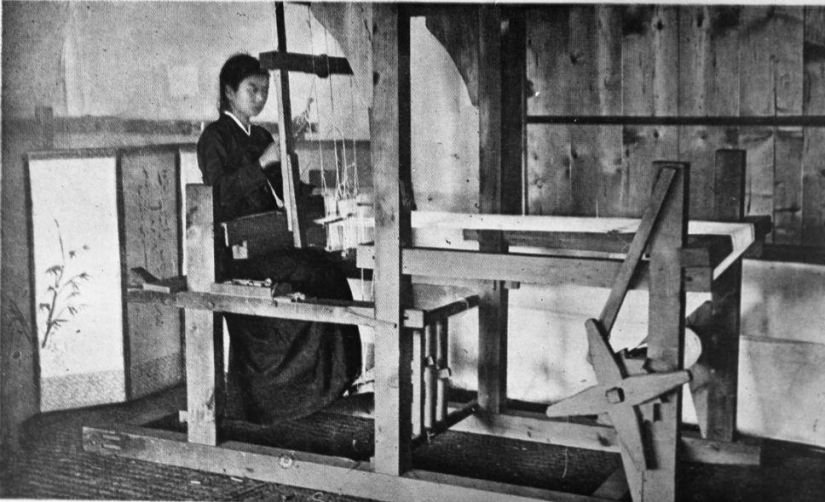
The woman at the loom. Then and now North Korea's economy heavily relied on textile industry, which was one of the main areas of export in the country. Like many other industries, it has suffered as a result of division of the country: for example, the EU imposed quotas on imports of textiles from North Korea.

The man on the street of Pyongyang.
Keywords: 20th century | Archive | Pyongyang | North Korea
Post News ArticleRecent articles

Reddit users gathered once and let's brag about who and what they treat in school canteens. Both the students themselves and their ...

What kind of wedding traditions do not happen! The Scots pour dirty slush over the bride, some peoples of India have decided to get ...
Related articles

The Indochina Peninsula, located in southeast Asia, is a favorite place for tourists all over the world. Myanmar, Thailand, Laos, ...

After the surrender of Japan in 1945, allied forces led by the US invaded the country. The Empire disintegrated, its form of ...

About each nation there are stereotypes. For example, the Germans say that they love the "Ordnung", discipline and purity. This ...

The winter sky sometimes presents phenomena that seem almost unreal. Pearlescent, or nacreous, clouds are rare guests in our ...